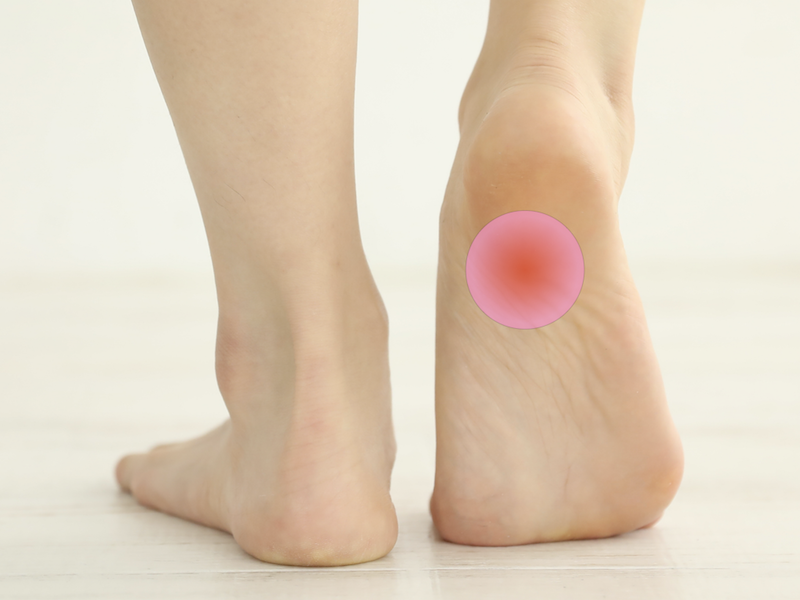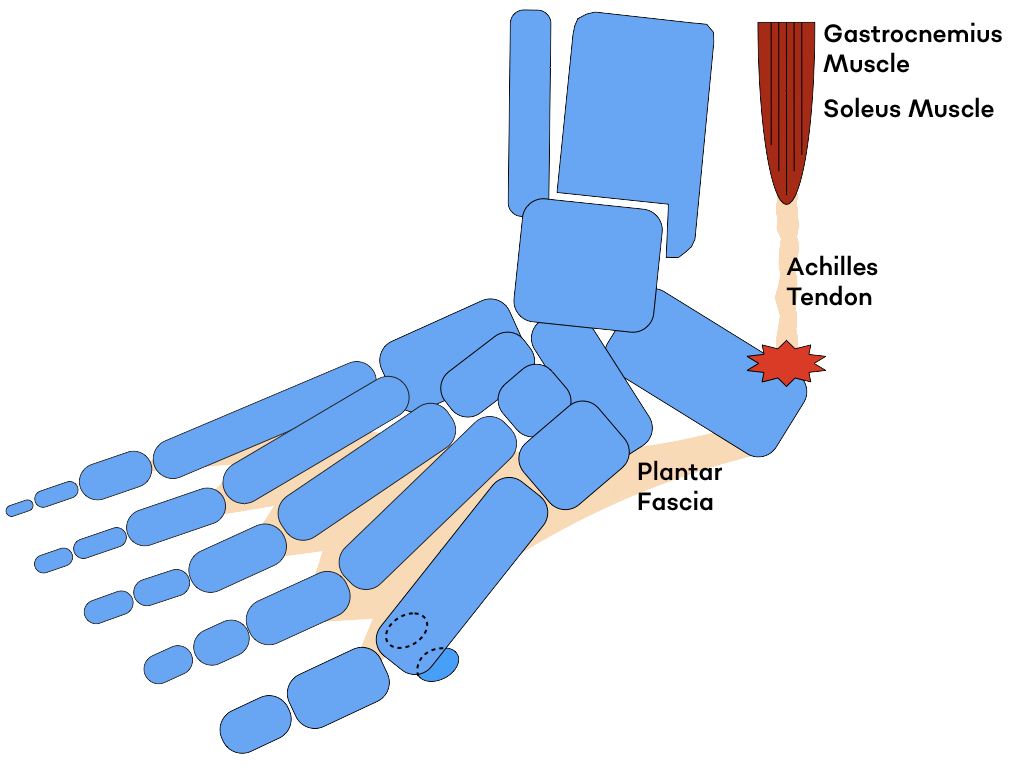Treatable ConditionsSupervised by Foot Clinic Omotesando
Plantar Fasciitis
“Pain in the heel when taking the first step in the morning” — this is often the first symptom of plantar fasciitis.
In the early stages, the pain tends to occur only in the morning and subsides as time passes. However, as the condition worsens, the pain may persist throughout the day. This can also lead to pain in the opposite foot due to compensatory walking.
The plantar fascia forms the base of the foot’s skeletal structure and is constantly subjected to tension from body weight. Because it is pulled in various directions with each step, several factors can cause plantar fasciitis, including:
• Flat feet (fallen arches)
• Limited push-off from the big toe (often due to hallux rigidus)
• Tight Achilles tendon
• Poorly fitting shoes
Chronic pain can be dramatically improved with steroid injections or extracorporeal shockwave therapy. However, unless the underlying causes are properly addressed, the pain will likely recur. Therefore, treatment and prevention must be implemented together.
Some patients are told that a heel spur is causing their pain when seen on an X-ray. While it may seem as though the spur is digging into the heel, this “calcaneal spur” is actually a calcium deposit that forms from chronic inflammation of the plantar fascia. Surgical removal of the spur is generally not necessary. Instead, it’s essential to treat the underlying cause of the plantar fasciitis.
Treatable Conditions Supervised by Omotesando Foot Clinic
- Joint Pain & Deformities
- Bunion (Hallux Valgus)
- Hallux Rigidus
- Hammer Toe / Claw Toe / Mallet Toe
- Gout Attack
- Lisfranc Joint Disorder
- Rheumatoid Arthritis
- Osteoarthritis of the Ankle
- Toenail Disorders
- Ingrown Toenail (Onychocryptosis)
- Thickened Toenail (Onychauxis)
- Double Toenail
- Toenail Fungal Infection (Onychomycosis)
- Muscle, Tendon, and Ligament Pain
- Plantar Fasciitis
- Achilles Enthesopathy
- Peroneal Tendon Subluxation
- Posterior Tibial Tendon Dysfunction
- Flexor Hallucis Longus Tendinitis
- Bone-Related Pain
- Sesamoiditis (Pain in the Big Toe)
- Metatarsal Head Pain
- Os Trigonum Syndrome
- Accessory Navicular Syndrome
- Osteochondrosis (Sever’s Disease etc.)
- Sinus Tarsi Syndrome
- Stress Fracture
- Foot Numbness
- Morton's Neuroma
- Tarsal Tunnel Syndrome
- Diabetic Peripheral Neuropathy
- Foot Lumps & Lesions
- Corns / Calluses / Warts
- Subungual Exostosis
- Glomus Tumor
- Plantar Fibromatosis
- Ganglion Cyst
- Epidermoid Cyst (Atheroma)
- Sports & Foot Health
- Causes of Pain (Threshold Changes)
- Pes Anserine Bursitis (Inner Knee Pain)
- Iliotibial Band Syndrome (Outer Knee Pain)
- Shin Splints
- Ankle Sprain (Lateral Ligament Injury)
- Lisfranc Ligament Injury
- Common Pediatric Foot Conditions
- The Arch as the Foundation of Growth
![Foot Clinic OMOTESANDO [Ashi no Clinic OMOTESANDO]](/img/en/cmn/logo1.svg)

